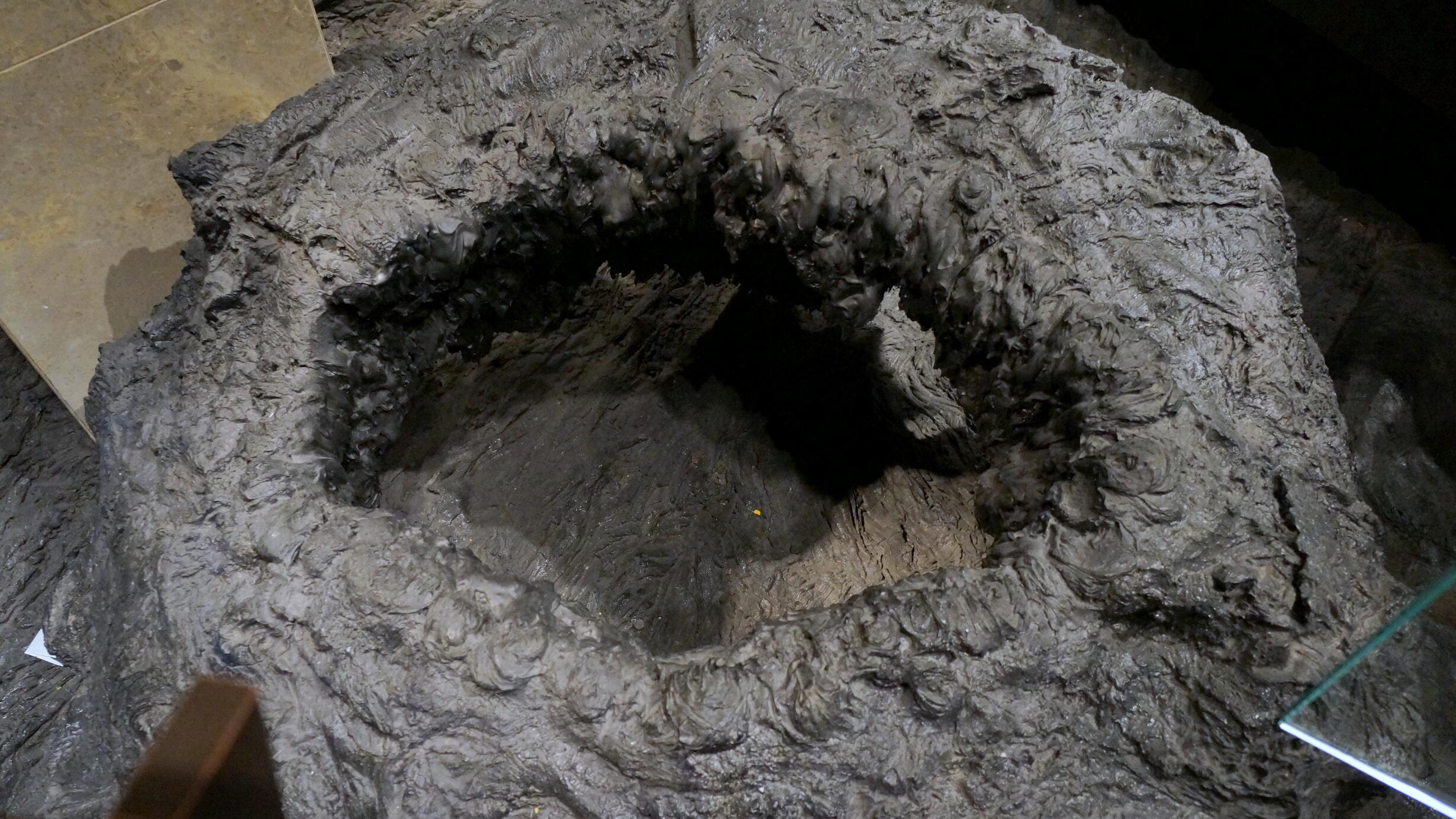Spatter Cone
Part of Hall of Planet Earth.

A spatter cone is created when blobs of lava are thrown into the air from a single event. The blobs pile up on each other, forming a cone-shaped structure around the vent. Some spatter cones, such as the cast one here, form from small vents on the crust of active lava flows.
A rainbow appears over recent lava flows on the eastern side of the Big Island, Hawaii. The flows erupted from Kilauea Volcano, the youngest sub areal volcano in the Hawaiian volcanic chain. Loihi'i, the youngest volcano, lies submerged beneath sea level just to the east of the Big Island.
photo credit: Jackie Beckett, © American Museum of Natural History
photo credit: Jackie Beckett, © American Museum of Natural History
The expedition team, including Josh Dudley of Ralph Appelbaum Associates (left) and Matt Fair of Research Casting International, encase the lava tree with burlap-soaked in plaster and reinforce the structure with 2x4s. This elaborate procedure stabilizes and protects the 'tree' before it's dislodged and lifted from the lava flow.
photo credit: Jackie Beckett, © American Museum of Natural History
photo credit: Jackie Beckett, © American Museum of Natural History
A view of red-hot lava through a "skylight", a collapse feature in the chilled upper surface of a recent lava flow from Kilauea volcano.
photo credit: Jackie Beckett, © American Museum of Natural History
photo credit: Jackie Beckett, © American Museum of Natural History